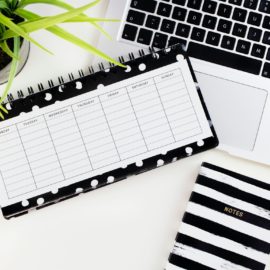
Do you want to naturally connect with others in conversation? How can you observe and respond to subtle signals?
James W. Williams explores these dynamics in his book How to Talk to Anyone, revealing how nonverbal cues of communication shape our daily interactions. He offers strategies for reading body language and building stronger connections in every conversation.
Discover the hidden language that can transform your communication skills and deepen your relationships with everyone you meet.
Pay Attention to Body Language
Williams underscores the significance of engaged listening, which entails more than merely registering the spoken words. It involves paying close attention to both verbal and nonverbal cues of communication, allowing you to grasp the complete message being conveyed. By paying attention to the subtleties in tone, the unspoken signals conveyed through physical gestures, and the pauses in conversation, you can infer hidden emotions, intentions, and unarticulated messages, which in turn deepens your understanding and solidifies your connection with the individual you’re interacting with.
| Other Perspectives • Engaged listening, while beneficial, can be mentally taxing and may not always be practical in every conversation, especially in casual or informal settings where the stakes are lower. • Some individuals may not express themselves typically through nonverbal communication due to neurodiversity or disabilities, making reliance on these cues less effective or even misleading. • In certain communication contexts, such as virtual meetings or phone calls, physical gestures and pauses may not be observable, thus limiting the applicability of this approach to understanding hidden emotions and intentions. • Some people may not want their unarticulated messages to be inferred, as they may prefer to communicate directly and explicitly. |
Steer the Dialogue
This gathered wisdom is crucial in steering the conversation in a direction that fosters understanding and a strong connection. If you detect unease or reluctance when discussing a certain subject, think about smoothly transitioning the dialogue to a topic that is less delicate. By carefully observing the subtleties of body language and tone of voice, you can sidestep potential missteps and foster a conversational environment that is both captivating and friendly.
| Practical Tips • Create a “wisdom deck” of cards with insightful questions or topics. Whenever you’re about to enter a conversation, pull out a card to use as a starting point. This can help guide the dialogue towards meaningful subjects and ensure you’re actively seeking and sharing wisdom. • You can enhance your conversational environment by introducing a “story swap” at your next social gathering, where each person shares a unique or funny story from their week. This activity encourages everyone to participate and creates a shared experience that fosters a friendly atmosphere. |






